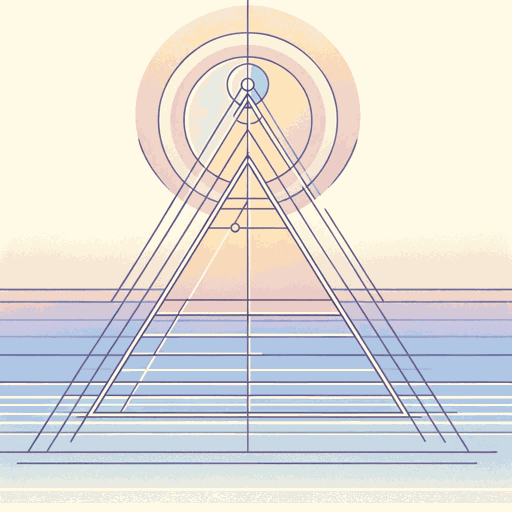40 pages • 1 hour read
Wassily KandinskyConcerning the Spiritual in Art
Nonfiction | Book | Adult | Published in 1911A modern alternative to SparkNotes and CliffsNotes, SuperSummary offers high-quality Study Guides with detailed chapter summaries and analysis of major themes, characters, and more.
Summary and Study Guide
Overview
Concerning the Spiritual in Art is a treatise on art and aesthetics written by the Russian nonobjective painter Wassily Kandinsky in 1910. Originally published in German and translated into English in 1914, the short book is often considered a manifesto of the modern art movement and greatly influenced the direction of art in the 20th century.
Kandinsky, considered one of the pioneers of abstract (or nonobjective) painting, explains and defends the ideas behind his art as well as offers suggestions for the future. In the first part of the book, he argues that art should be freed from its traditional role of representation, or depicting visible and material reality. Instead, artists should seek to evoke emotions purely through color and form. Whereas artists of the past sought to embody abstract ideas and emotions in concrete representations of the material world, artists of the future should seek to communicate their inner emotional and spiritual life directly through color, shape, and line. Kandinsky argues that civilization as a whole is moving away from a “materialistic” and toward a “spiritual” conception of life and implies that the mystical insights of art are just as valid as those of science.
In the second part of the book, Kandinsky discusses the specific technical elements of his theory of art, including the psychology of colors and how color and form work together to convey emotion and meaning. He concludes the book with an exhortation to artists to maintain a sense of responsibility to communicate meaning and truth in their works.
This guide refers to the Dover Publications edition of Concerning the Spiritual in Art, which is a republication of the original 1914 English edition translated by M. T. H. Sadler.
Summary
In the Translator’s Introduction, M. T. H. Sadler presents some artistic and cultural background for Kandinsky’s ideas and explains his own aims in translating the book.
Part 1 of the book, “On General Aesthetic,” opens with an Introduction in which Kandinsky lays out the aesthetic and social problems he means to address. Kandinsky argues that artists of his era feel a kinship with the spiritual ideals of an older, nonrealistic (“primitive”) style of art, but the dominance of materialist thought is acting as an obstacle to reviving these ideals. Most artists as well as the public are consumed with merely external and technical interests in art, and it is only solitary visionaries who move spiritual progress forward.
The book is divided into Parts 1 and 2, and this guide refers to the numbered segments as “Chapters.” In Chapter 2, “The Movement of the Triangle,” Kandinsky outlines what such spiritual progress in society looks like, using the metaphor of a multi-sectioned triangle. In Chapter 3, “Spiritual Revolution,” Kandinsky argues that an anti-materialist movement is already on the rise, often taking inspiration from India and other non-Western cultures to cultivate an “inner knowledge” that leads to spiritual insight. This is being seen throughout the arts, from post-Impressionist painting to symbolist poetry and expressionist music. In Chapter 4, “The Pyramid,” Kandinsky argues for a rapprochement of all the arts using the nonmaterial, nonrepresentational aspects of music as a guide.
Part 2 of the book, “About Painting,” dwells in particular on the psychological and emotional meaning of color and its relationship to form. In Chapter 5, “The Psychological Working of Colour,” Kandinsky claims that color is “a power which directly influences the soul” and that the artist “plays” color like a musician to cause “vibrations in the soul” (25). Chapter 6, “The Language of Form and Colour,” is the longest chapter in the book and presents a detailed account of Kandinsky’s scheme of the colors in their psychological and emotional attributes. Kandinsky concludes that color and form support each other by evoking specific emotional “vibrations” in the viewer based on the concept of the “inner need.”
Chapter 7, “Theory,” discusses the need for “spiritual harmony” in all the arts, looking at some specific examples where this is being accomplished in theater, dance, and music; at the same, Kandinsky implies that formulating a definite theory for creating art is a risky business. Chapter 8, “Art and Artists,” briefly outlines a credo for artists in terms of their spiritual and social responsibilities. In the “Conclusion,” Kandinsky ends his treatise by arguing in favor of rationally planned composition and “conscious creation” in painting.

